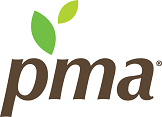September Market Update
- Posted on 4 Sep, 2025
Freight demand remains soft across most sectors, with truckload and dry van volumes struggling, reefers seeing short-term spikes, and maritime rates. Economic and industry signals point to cautious carriers and a sluggish market through year-end.
Freight Demand and Truckload Trends
Freight demand unexpectedly dipped in July as economic uncertainty, high inventories, and construction slowdowns weighed on volumes. Truckload tender volumes fell 10–15% year-over-year, though carriers managed capacity with rejection rates topping 10% in some regions. Spot rates remained stable, but the extended U.S.China tariff truce could give peak season a lift.
Despite weak fundamentals, carriers have managed capacity well. Freightwaves reported The National Truckload Index averaged $2.27 per mile in July, down just 0.4% from last year. Contract rates dipped slightly but still sit above spot rates. In Q2 2025, capacity was easier to secure, but spot rates and lane compliance trended down, showing ongoing weak demand.
The U.S.–China 90-day tariff truce now extends to November 10. Shifts are squeezing flatbed demand and could spill into dry van and reefer markets. In Freightwaves Q3 Shipper Rate Report spot rates averaged $2.25 per mile in Q2, down 4.3% quarter-over-quarter, though late summer freight could push them up 0.5%–3% in Q3.
Dry Van Market
The trucking ton-mile index slipped 0.2% from May, showing ongoing softness. Year-over-year demand was up just 1%, supported by niche sectors such as wood products, petroleum, and machinery wholesaling, but not by broader dry van strength. Capacity has not contracted, leaving carriers under pressure.
Jason Miller on DATiQ‘s Market Update stated that
“forecasts indicate that a bull market pricing cycle may not begin until Q2 2026, contingent on various factors, including a significant reduction in effective tariff rates.”
Dry van saw a slight spot market tightening with Brake Check Week and and increase in load posts which caused the load-to-truck ratio to rise by 17% to 6.69.
Reefer Market
The National Restaurant Performance Index reported that restaurant operators are squeezed by higher input costs, with staples such as beef, coffee, eggs, and cocoa up 21% over the past four years. With profit margins at just 3–5%, restaurants and bars are struggling to absorb tariffs, labor costs, and wage pressures, while declining customer spending marks one of the weakest six-month periods in a decade
DAT reported reefer freight has seen demand spike although this is not a sign of overall market health. Load-to-truck ratios surged as volumes rose 19% week-over-week and 44% year-over-year, while carrier postings dropped 2%. The ratio jumped 22% to 12.71.
Spot rates responded quickly, with Labor Day weekend demand lifting rates by seven cents per mile to just over $2.04, roughly four cents higher than both 2023 and 2024.
Maritime Trends
Freightwaves reported Container imports surged 18.2% in July to 2.62 million TEUs, near record highs, as shippers frontloaded goods ahead of tariff deadlines. The Port of Los Angeles alone moved more than 1 million TEUs. However, currently trans-Pacific spot rates dropped to their lowest levels since late 2023, down as much as 76% year-over-year. Momentum is already fading, with bookings down 10.7% month-over-month.
Broader Economic Signals
The U.S. economy continues to send mixed messages. Q2 GDP grew 2.8% thanks to consumer spending, yet job growth slowed to just 114,000 new positions in July, with unemployment rising to 4.3%. Manufacturing surveys signaled contraction, while retail sales rose 0.5% month-over-month. Inflation cooled slightly, though core service costs remain sticky.
Single-family homebuilding is sluggish, constrained by affordability challenges, but multifamily starts surged 27% year-over-year in July, marking the strongest pace in more than two years. Despite this growth, builder sentiment remains pessimistic due to high costs and elevated mortgage rates.
New Class 8 truck orders fell 43% year-over-year, with annualized orders tracking at 181,900 units, near recessionary 2019 levels. Policy uncertainty and tariffs are slowing fleet renewal. Used truck prices were mixed: three-year-old models softened slightly, while four- and five-year-old trucks edged up due to higher new-truck costs, though weak freight demand is capping gains.
Key Takeaways
- Freight Demand: Truckload volumes down 10–15% YoY; spot rates stable; carriers managing capacity well.
- Dry Van: Demand flat (+1% YoY); capacity unchanged; temporary spot tightening raised load-to-truck ratio to 6.69. Recovery not expected until 2026.
- Reefer: Short-term demand spikes (44% YoY), but restaurants struggle with 3–5% margins. Labor Day rates lifted slightly to $2.04/mile.
- Maritime: Container imports surged 18% YoY; trans-Pacific spot rates down 76%; bookings slowing.
- Economy & Trucks: GDP +2.8% but job growth slow; single-family building sluggish, multifamily +27% YoY; new Class 8 orders down 43%, used truck prices mixed.
- Outlook: Seasonal restocking may help, but freight markets likely sluggish through year-end.
Thank you for reading!
This update uses reliable industry data sources. I do my best to advise on the market and hope that this information can be considered as you formulate your own conclusions. If you would like to contact me about dry and refrigerated transportation, crossdocking, and cold storage solutions, or any other full truckload transportation needs, please reach out to bella.montoya@aandztrucking.com with your questions and comments!









